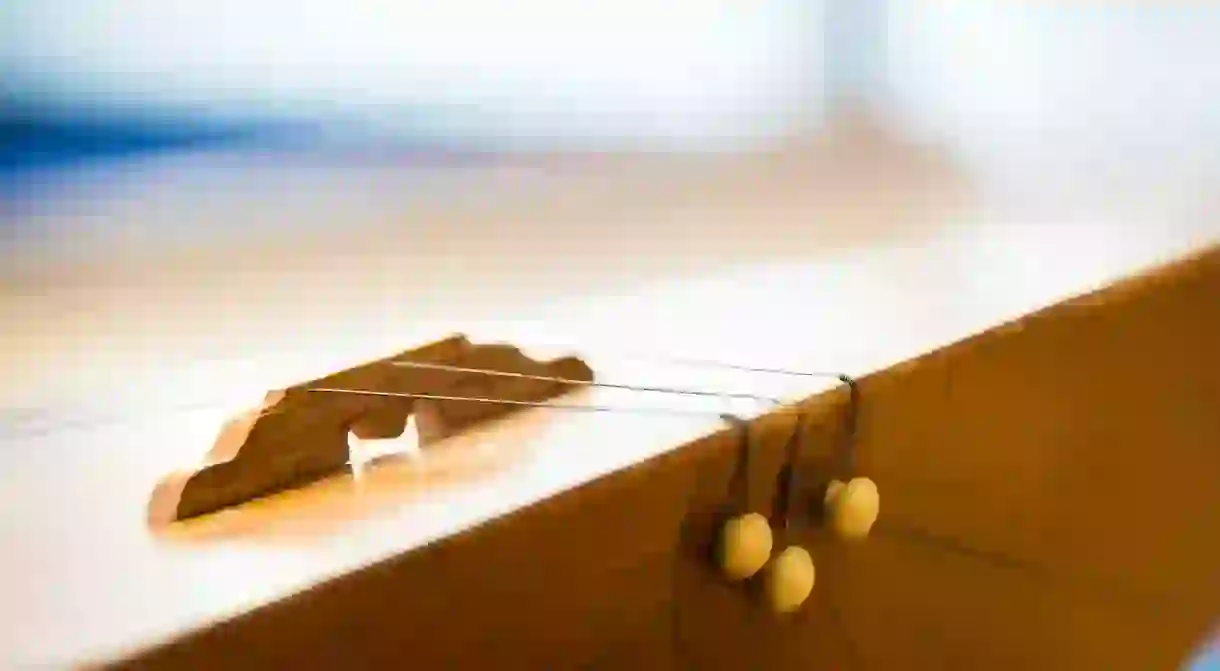An Introduction to Folk Instruments: Russian Balalaika

Among the many folk instruments of Russia, the balalaika stands out as not just the most recognised, but also as a symbol of Russian culture. However, it is surprising how little we know about the origins of this national instrument. Luckily, much is being done for its development, and it continues to evolve as a folk instrument and a member of the concert orchestra.
The Forbidden Instrument
Although historians suggest the balalaika came to be centuries ago, its exact dates of origin are unknown. Some theories suggest it is descendant of the domra, another folk instrument. Others state that it was invented during the Mongol invasion of Russia in the 13th century. Additionally, Russian serfs likely used it to play cheerful and entertaining songs, but in the hands of slightly drunk jesters (known as skoromohi in Russian) the balalaika became a weapon used to mock the government. As a result, Tsar Aleksei Mikhailovich (17th century) ordered that all folk instruments, including the balalaika, were to be gathered and burned. Even after the ban ended, the balalaika remained unpopular until the 19th century, about 200 years. The instrument might have disappeared completely if not for the conservation efforts of one keen musician.

A Revival
The revival of the balalaika is owed to young nobleman Vasily Andreev. While touring one of his estates, he heard one of his serfs playing the instrument and was fascinated. Andreev was a musician and very keen on folk instruments. He learned to play the balalaika and soon perfected his craft. Little did he know that he would inspire a whole generation of musicians to take up folk instruments, including Oleg Piskunov who started playing in early childhood. Born to an army man, Piskunov and his family moved around Russia often. When he was three, the family landed just outside of Bezhetsk, where Andreev was born. So, when Piskunov started his musical training, he was basically in the birthplace of the modern balalaika, and many of the musicians at his school sudied folk instruments.

How It Works
Andreev also helped restart and perfect the balalaika manufacturing business. With the help of a St Petersburg violin maker, he standardised the balalaika with some modifications—for example, he shortened the length. The balalaika has a characteristic triangular shape. The soundboard is made of pine wood and the back is beech. Most balalaikas have three strings (though some have six); the last two are usually tuned to the same note, an E, and the first to an A, which is how most concert balalaika players tune their instrument. In folk usage, all three strings are set to different notes. Melodies are played by either rapid strumming or plucking. There are many varieties of balalaika, the development of which, once again, is the achievement of Andreev. All of them have found their place as orchestra and solo instruments and can be heard in music more often than many realise.

The Balalaika Today
It was Andreev’s mission to not only to make the instrument popular in concert form, but also to bring it back to the people. To do this, he began teaching soldiers entering the army, each of whom was handed an instrument, which they were allowed to keep after completing their service. He also conducted performances and composed music, including folk arrangements specifically for the balalaika. It is largely due to his efforts that the balalaika gained popularity once again. Musicians, such as Piskunov, are living proof that the balalaika is a sophisticated instrument that has much to offer.

For his part, Piskunov is a passionate musician who wants to devote his life to playing and discovering this instrument. As a soloist and as part of orchestras, Piskunov has collected national awards of the highest honour. His international projects include a recording of the soundtrack for The Grand Budapest Hotel [2014]. Below, enjoy a short excerpt from Alexandre Desplat’s tune Moonshine, as played by Piskunov, which can be heard throughout the movie.
Piskunov’s prognosis for the future of the balalaika is very optimistic. He notes that the tendency to compose balalaika music based on folk tunes is changing and more original scores are appearing, rather than rearrangements of existing music. However, he also says that “Nowadays there aren’t enough concerts based on folk music”. Currently, there isn’t a compilation of pieces originally played on the balalaika, as many weren’t recorded in written form. However, efforts are in place to write and compile these arrangements.













